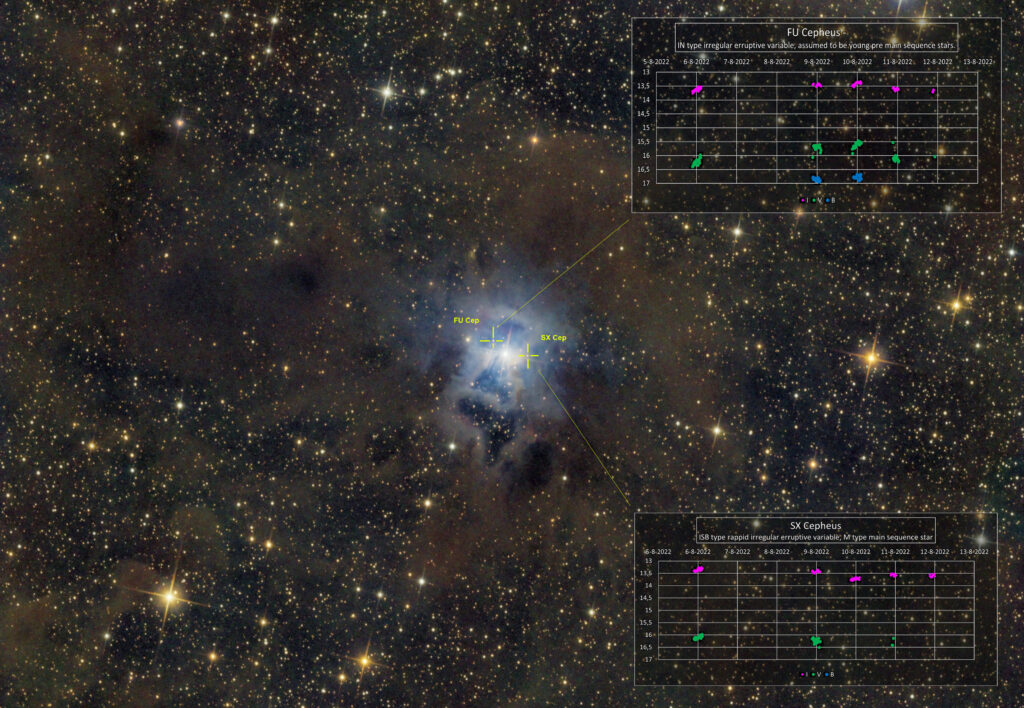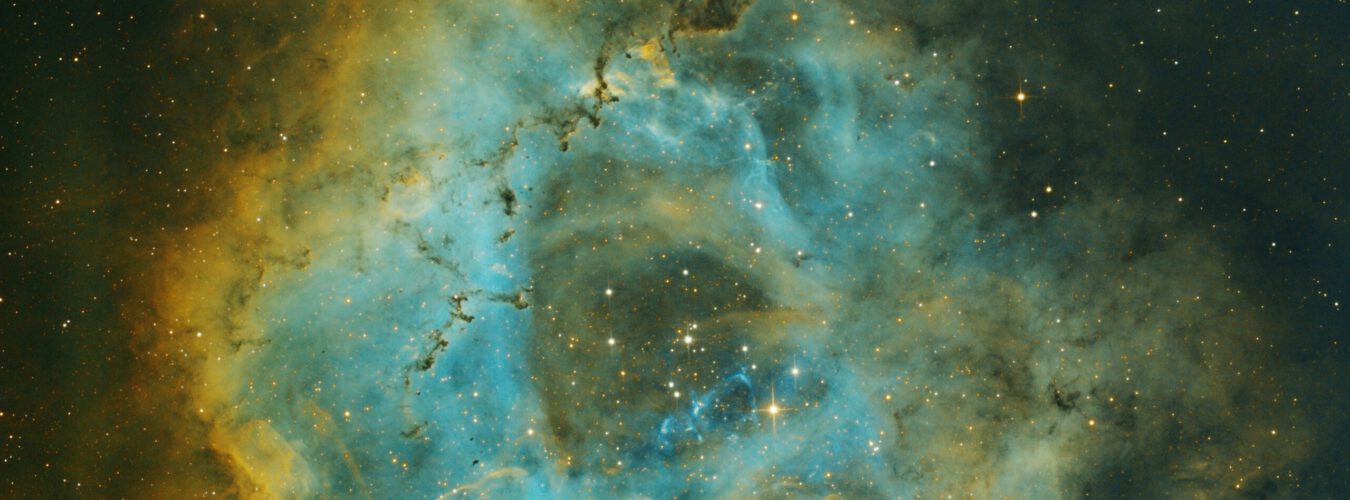
My 5 night image of the iris nebula has yielded 2 measurably variable stars, out of the 6 in view (and a nice image)
FU Cepheus and SX Cepheus, These are both actually in or close to the Iris Nebula.
FU Cepheus is probably a young star object that has not yet fused hydrogen, and is therefore not officially a star yet.
Both are erruptive variables according to the description of the AAVSO. Below is the description I was able to find.
FU Cepheus: erruptive variable of type IN:
Orion variables. Irregular, eruptive variables connected with bright or dark diffuse nebulae or observed in the regions of these nebulae. Some of them may show cyclic light variations caused by axial rotation. In the Spectrum-Luminosity diagram, they are found in the area of the main sequence and subgiants. They are probably young objects that, during the course of further evolution, will become light-constant stars on the zero-age main sequence (ZAMS). The range of brightness variations may reach several magnitudes. In the case of rapid light variations having been observed (up to 1 mag in 1-10 days), the letter “S” is added to the symbol for the type (INS). This type may be divided into the following subtypes:
INA: Orion variables of early spectral types (B-A or Ae). They are often characterized by occasional abrupt Algol-like fadings (T Ori);
INB: Orion variables of intermediate and late spectral types, F-M or Fe-Me (BH Cep, AH Ori). F-type stars may show Algol-like fadings similar to those of many INA stars; K-M stars may produce flares along with irregular light variations;
As FU Cepheus is a red star, it must be a INB subtype.
SX Cepheus: erruptive variable of type ISB:
Rapid irregular variables of the intermediate and late spectral types, F-M and Fe-Me.
The descriptions of different types of variable stars I found here:
